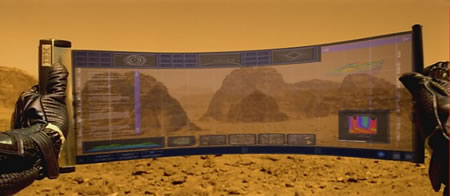monstercameron
Well-Known Member
its kinda funny, gph went oled on the wiz that reverted to a rather crappy lcd on the caanoo...was it quality control. pricing, high defect rate?
I was thinking that the wiring would come off of the side of the panel (it's shown as being on the left side on my sketch) and would connect/plug into where we decide to place the video-out port. The port could be on the side of the device or even flush within the rounded back panel, maybe. I'll draw up a few ideas later today when work isn't so busy. Essentially the screen is a separate piece from the main unit/1CP2. It doesn't need to be permanently attached to the base in any way.Franko, how is your bendable design supposed to connect to the rest of the unit? Is it meant to be wireless?
Folding half of it over the base seems really cumbersome to me.. you'd need a bunch of extra stuff in the case to align it and lock it in place, and you'd inevitably have some pixels that are visible but distorted near the fold.
Was I the only one thinking about that feature film length McGyver Episode on Mars ?Edit1: Bottomline, this type of screen would actually save us valuable space - our future Pandora could be even smaller and more functional.

If the more expensive 720p screen would have better characteristics (as _wb_ mentioned: response time, dailight visibility, etc) than the 1080p screen, I would still vote for the more expensive one (if the price difference isn't that big of course)OLED are likely to be expensive since Samsung can more or less monopolize construction and pricing of them.
However, 5" 1080p screens ARE starting to hit the off-branded phone markets, which means somewhere they're being manufactured in bulk on the cheap.
Example:
http://www.engadget.com/2013/04/17/zopo-c2-aliyun-os/
A $230 off contract complete phone with a 5" 1080p screen, quad core CPU, etc...
At that rate, the screen can't be all that expensive. We may be coming on a time when 1080p LED/LCD screens may be cheaper than 720p OLED screens simply due to the number of manufacturers and volume.
USB 3.0? At least one full size SD card slot?So we want
- roughly 5" inch diagonal
- 1280x720 or slightly larger
- fast response times
- 24bit colour (8bit grey)
- serial interface
what else?
Isnt the display on the gs4 1080p samoled?How long do you think it will be before a FullHD (AM)OLED display with a fast response time becomes available?
I'm thinking that, if the P2 is going to have as long a product life as the P1, it would be a good idea to give people in 2018 as little outdatedness to moan about as we realistically can.
Isnt the display on the gs4 1080p samoled?How long do you think it will be before a FullHD (AM)OLED display with a fast response time becomes available?
I'm thinking that, if the P2 is going to have as long a product life as the P1, it would be a good idea to give people in 2018 as little outdatedness to moan about as we realistically can.
Good question, but I dont believe it will take long...samsung is already selling exynos 5250 to chinese customersIsnt the display on the gs4 1080p samoled?How long do you think it will be before a FullHD (AM)OLED display with a fast response time becomes available?
I'm thinking that, if the P2 is going to have as long a product life as the P1, it would be a good idea to give people in 2018 as little outdatedness to moan about as we realistically can.
It is.
But how long until they are available in small volumes to no-name projects like the pandora?

